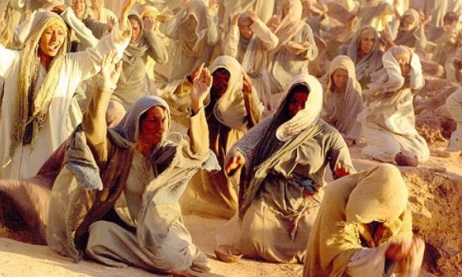Iranian film on prophet Muhammad set for premiere

A multimillion-dollar biopic about the childhood of the prophet Muhammad – Iran’s most expensive and lavish film to date – is set to premiere on Sunday.
Tehran’s Fajr international film festival, which coincides with the anniversary of the 1979 Islamic revolution, is scheduled to show the country’s own version of how Islam’s most revered figure lived. To protect the prophet’s dignity, the film will be shown out of competition.
Iran has been a vocal critic of the prophet’s portrayal in the west, recently expressing strong condemnation of the Charlie Hebdo cover cartoon in the aftermath of the deadly attacks in Paris, which depicted Muhammad weeping and holding up a sign reading Je Suis Charlie.
The film, to be released as Muhammad, Messenger of God” in the festival’s opening ceremony, is made by Majid Majidi, a leading pro-establishment Iranian director who has worked for more than five years – with a great deal of secrecy – to produce what is only the second big-budget feature made about the prophet. The first was Moustapha Akkad’s 1976 The Message, starring Anthony Quinn, which sparked controversy despite not showing the prophet on screen to avoid hurting Muslim sensitivities.
Majidi has had his own doubts about Akkad’s biopic, which he said failed to do justice to Muhammad’s life by showing “only Jihad and war” and also because “the image of Islam in that film is the image of a sword”.
Majidi’s state-sponsored film, which is the first part of an ambitious trilogy about the prophet’s life, tells the story of Muhammad from his birth to the age of 12, ending with his first visit to Sham (Syria) where Bahira, a Christian monk, is believed to have predicted he would one day become a prophet.
Iran is bracing for a large international release in March, at least in the English- and Arabic-speaking worlds.
Muhammad’s face will not be shown on screen and the Italian cinematographer Vittorio Storaro, the three-time Oscar-winner for masterpiecesfilms such as Bernardo Bertolucci’s Last Tango in Paris and Francis Ford Coppola’s Apocalypse Now, has worked on various combinations of light and darkness to make religious depictions in the film possible.
But the biggest issue will likely be that it is produced by Shia Iran. Compared with Sunnis, Shia Iranians have a relatively relaxed attitude towards visualising religious figures, which has caused controversies in the past.
Majidi held a press conference this month in which he tried to assuage fears of a backlash, saying he had consulted both Shia and Sunni scholars from across the Muslim world before making the film.
“We chose a period of his life about which there is no difference between different Shia and Sunni scholars and groups,” he said. “We made this film with the view of bringing unity [to] the Muslim world.”
Majidi said his goal was to present the right image of Islam to the world. “The world’s perception of Islam today does not match with the beauties of Islam.”
However, the film has not been able to escape contention. Egypt’s Al-Azhar University, one of the world’s highest Sunni authorities, has asked Iran not to show the film, while Qatar announced a rival plan for a film about the prophet, with a budget of $1bn (£660m) and backed by likes of the Lord of the Rings producer Barrie Osborne.
When the news about the Iranian film came out in 2012, Al-Azhar said in a statement: “We demand that Iran refrain from releasing the movie, so that an undistorted image of the prophet can be preserved in the minds of Muslims. We call upon all film-makers to respect religions and prophets.”
In response, Majidi has said: “I am aware of their concerns, we have our own sensitivities about religious figures and I wonder why they are criticising it before actually seeing it.”
He added: “While there are 250 films on Jesus Christ, 120 films on Moses, 80 about the other prophets and 40 films on Buddha, there is only The Message on the life of prophet Muhammad. Unfortunately, we fail to introduce our prophet to the western world. In this case enemies will remain enemies.”
Majidi may receive a hard time abroad for his film, but at least he can be confident about its reception at home. Iran’s supreme leader, Ayatollah Ali Khamenei, who has the ultimate authority in the country, is backing the film’s production, meaning that the Iranian media will have little room to criticise the film publicly.
Majidi’s film is financed by Bonyad Mostazafan, Iran’s foundation of the oppressed, which is a charitable entity under Khamenei’s authority. In October 2012 Khamenei made an unusual visit to the film’s location to the south of Tehran, near the holy city of Qom, where giant replicas of sixth-century Saudi Arabian cities Mecca and Medina were built. Other parts of the film were shot in South Africa after India refused to allow filming there.
Within Iran’s largely home-based film industry, Majidi’s project was produced on an ambitious scale with a budget reported to be around $30m. Besides Storaro, who is said to have brought his own crew from Italy, other international figures on the film include the Oscar-winning Scott E Anderson, who has worked on visual effects, and the Iranian-born British singer Sami Yusuf, who has contributed to its score.















































